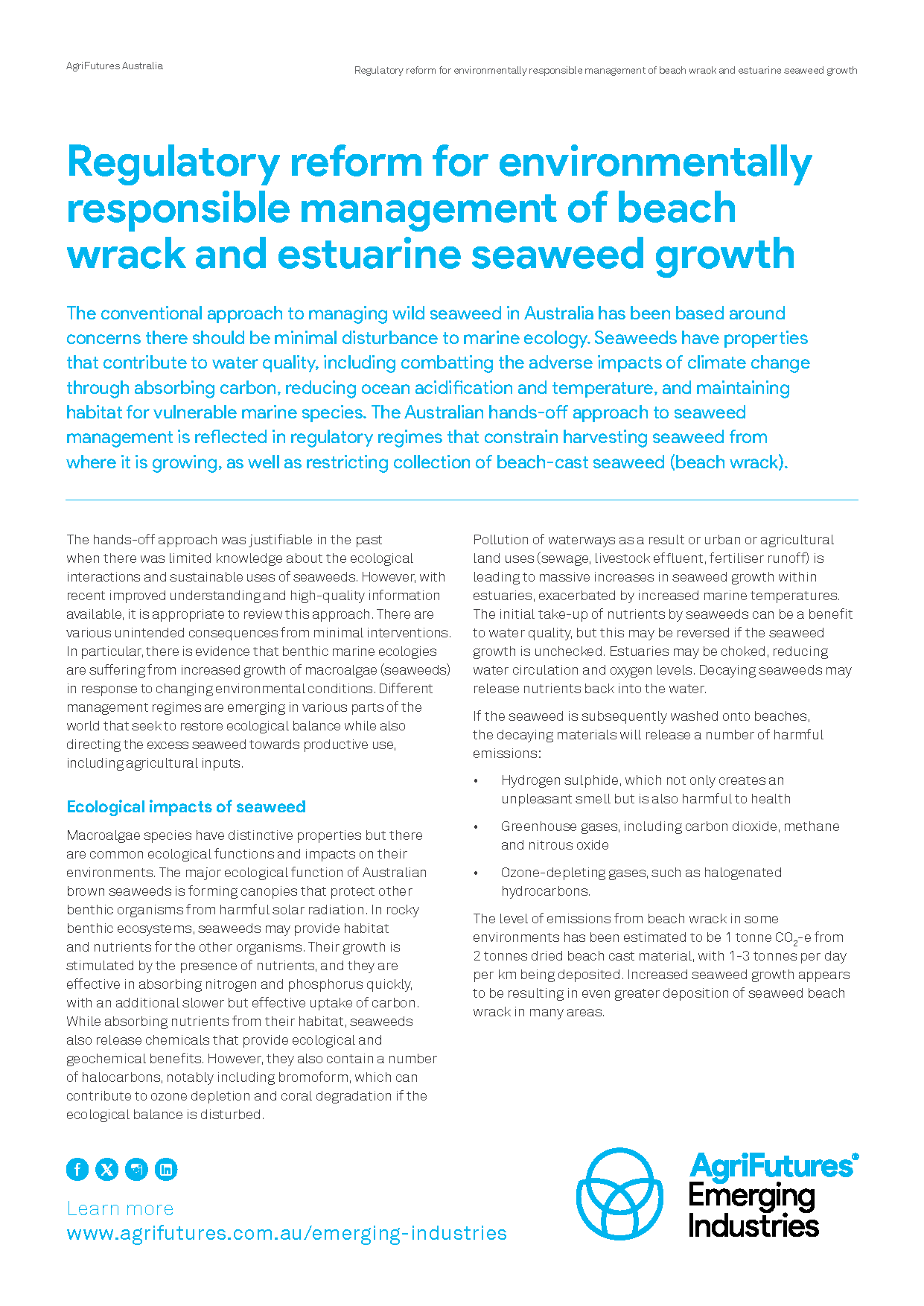Fact sheet: Practical use of seaweed as a farm input
While there is considerable variation between different species, seaweeds are generally a good source of macro and micronutrients, rich in protein, carbohydrates, fibre, fatty acids...
 SEAWEED
SEAWEED 
8 pages
Published: 4 Mar 2024
Author(s): Jane Stanley
Download report PDF
DownloadThe conventional approach to managing wild seaweed in Australia has been based around concerns there should be minimal disturbance to marine ecology. Seaweeds have properties that contribute to water quality, including combatting the adverse impacts of climate change through absorbing carbon, reducing ocean acidification and temperature, and maintaining habitat for vulnerable marine species. The Australian hands-off approach to seaweed management is reflected in regulatory regimes that constrain harvesting seaweed from where it is growing, as well as restricting collection of beach-cast seaweed (beach wrack).
The hands-off approach was justifiable in the past when there was limited knowledge about the ecological interactions and sustainable uses of seaweeds. However, with recent improved understanding and high-quality information available, it is appropriate to review this approach. There are various unintended consequences from minimal interventions. In particular, there is evidence that benthic marine ecologies are suffering from increased growth of macroalgae (seaweeds) in response to changing environmental conditions. Different management regimes are emerging in various parts of the world that seek to restore ecological balance while also directing the excess seaweed towards productive use, including agricultural inputs.